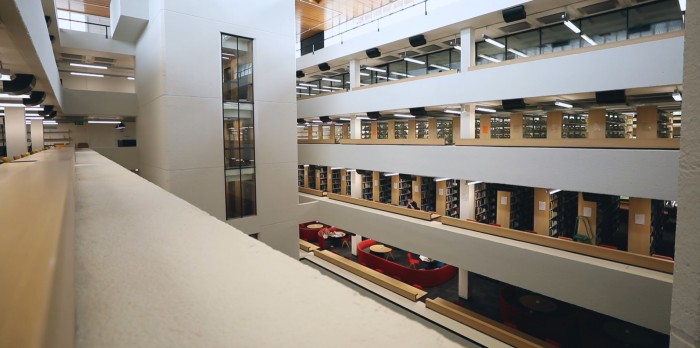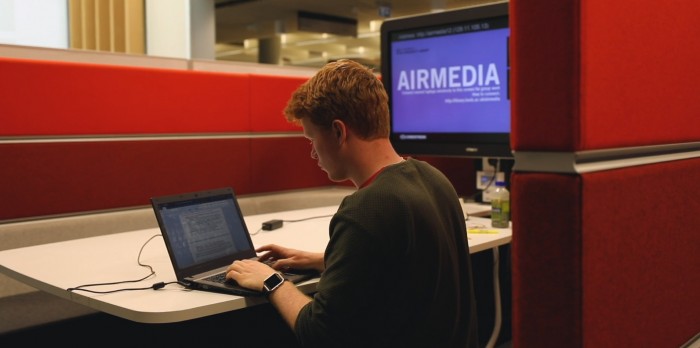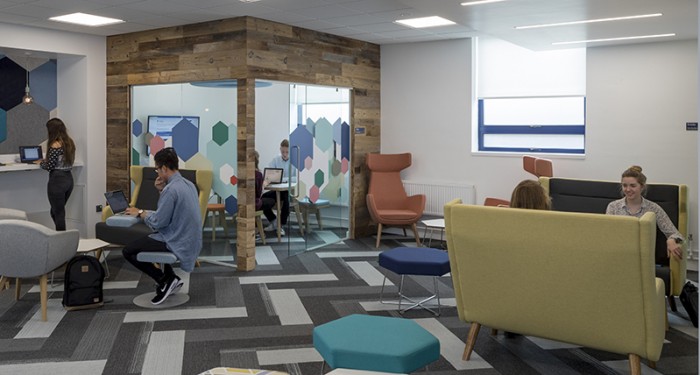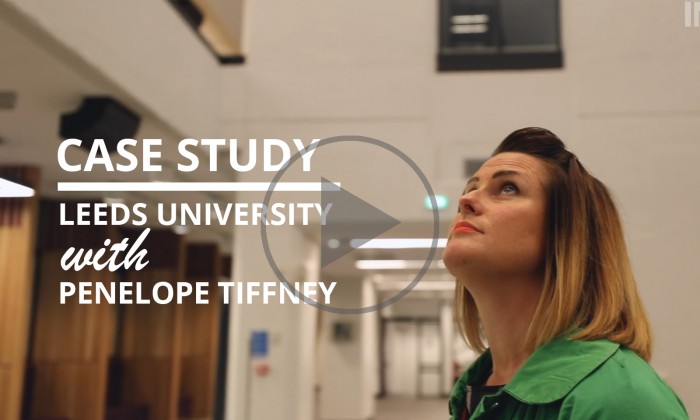The Gold Standard in Higher Education Interiors
As the academic year draws to a close, we take a look at the big trends in Higher Education interiors. Our latest research suggests that investment in infrastructure is likely to continue at the pace we have seen in recent years. This is despite the UK’s decision to leave the European Union, resulting in uncertainty in research income and access to lower cost loans from the European Bank.

The main driver for investment continues to be increased competition, due to the removal of the cap on student numbers, and rising expectations from fee paying students. International students remain an attractive income stream, but competition is high, so good facilities can make all the difference. Reassuringly, the sector appears to be well placed for continued investment. Whilst over 50% of the £34.7 billion 2015/16 HE income was spent on academic staff, there has been continued capital investment in campuses across the UK, still leaving a healthy surplus of £2.8 billion at the end of last year.
‘you just have to look at the way hotels and the hotel industry has changed. The idea of a hotel lobby where you come, sit down, work, meet somebody, have a coffee, or just take time-out, it’s exactly what we’re trying to bring into spaces within education’
Design Insider caught up with Penelope Tiffany, Interior Designer at the University of Leeds which was awarded University of the Year in 2017, in the Times and Sunday Times, Best University Guide and most recently gaining a Gold rating in the new Teaching Excellence Framework (TEF). ‘There is no doubt that the evolution of furniture design has impacted on the way learning is done, learners need spaces to be able to take themselves away and work individually, but they also need to work collaboratively. We get a lot out of social learning and that is very much how we develop the different spaces within the university’, explains Penelope.

We see a clear correlation between HE interior design and planning an office workspace. Balancing soft seating, with quiet areas and pods, to create spaces to work alone or as part of a larger group. Penelope also identifies the hospitality sector as being one step ahead in terms of how space is used, ‘you just have to look at the way hotels and the hotel industry has changed. The idea of a hotel lobby where you come, sit down, work, meet somebody, have a coffee, or just take time-out, it’s exactly what we’re trying to bring into spaces within education’ (watch full interview).
Student and parent expectations don’t stop at campus facilities, or the academic success of the university. Getting accommodation right is key. Whilst all universities must provide accommodation provision to first year undergraduates, the BCFA found that the market is increasingly shifting to Purpose Built Accommodation with greater private sector investment.
Whether it’s campus development or student accommodation, the success of any project is ensuring that product specifications are fit for purpose. Delivering performance during the whole of the refurb cycle, pushing the boundaries in design and where possible delivering all of this with environmental credentials to allow further opportunities for differentiation.
Almost all universities in the UK work with one of six regional purchasing consortiums, who take the headache out of public sector tendering procedures, providing specification guidance by sharing knowledge and insight. Mark Hayter, Category and Shared Services Manager at the North-Eastern Universities Purchasing Consortium specialises in furniture specification, and has seen HE interiors becoming more design led. Acknowledging that there has been a programme of ‘beautification’ within HE, he also identified that innovation is resulting from new technology and a focus on Pedagogy (study of how best to teach), looking at on how space is planned for teaching use.

We asked Mark to explain what he looks for when shortlisting suppliers, ‘our members very much own the specifications which is set in close consultation with them. It has become increasingly clear that price, whilst still important, is no longer the significant criterion. The furniture market is reasonably mature in terms of compliance, standards, and warranties, so members ask us to focus on creating frameworks of suppliers they can be assured will deliver quality products through quality service. Increasingly that service requirement gravitates towards three aspects of design: product suitability, space planning, and interior design. Of course furniture need to be functional, but suppliers that can interpret pedagogy to optimise the learning space inevitably deliver effective and attractive solutions.’
Full contact details of the purchasing consortium structure and their university membership are included in the recent BCFA Market Focus on HE*, where you will also find details of the main architects and designers working in Higher Education. Details on the top 50 companies providing PBA in the UK can be found in the BCFA Market Overview on HE Accommodation*, so request your copies today!
*The BCFA Market Reports are only available to BCFA members, please contact Mary@thebcfa.com for more details.
Check out our full interview with Head of Interior Design at Leeds University, Penelope Tiffney:





